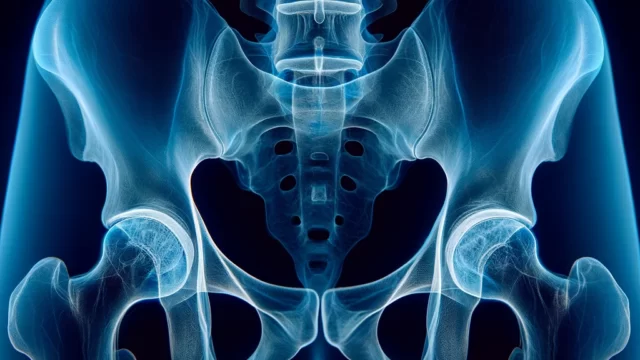Purpose
Observe the sacroiliac joint space. Typically, images are taken on both sides for comparison.
Diagnosis of arthritis, fractures, and dislocations.
If pelvic fracture is suspected, CT or MRI is recommended.
Prior confirmation
Remove any obstacles.
Positioning
Supine position.
Align the mid-sagittal plane and the central axis of the cassette.
Position the patient in an oblique angle with the side of interest raised (40° for the upper joint and 20° for the lower joint).
Slightly flex the hip and knee joints on the side closer to the cassette.
On the side far from the cassette (the side of interest), flex the knee and perform slight abduction.
Place the upper limbs away from the irradiation field.
Position the cassette to align the X-ray central ray and the center of the cassette.
Apply R/L markers.
CR, distance, field size
CR : Direct the X-ray beam toward a point 3 fingerbreadths medial to the anterior superior iliac spine and 2 fingerbreadths caudal to the point, angled 15° caudo-cranial.
Distance : 100 cm.
Field size : Include the sacroiliac joint with ample margin.
Exposure condition
75kV / 25mAs
grid ( + ). *Pay attention to the direction of the grid for oblique incidence.
Suspend respiration.
Image, check-point
Normal (radiologykey)
The sacroiliac joint space should be visible.
The sacroiliac joint should be projected at the center of the irradiation field.
The thigh on the side away from the cassette should not overlap.
For bilateral imaging, the images should be taken symmetrically.
The space between the acetabulum and the femoral head should be uniform.
Soft tissues should be visible.
Videos
Related materials














